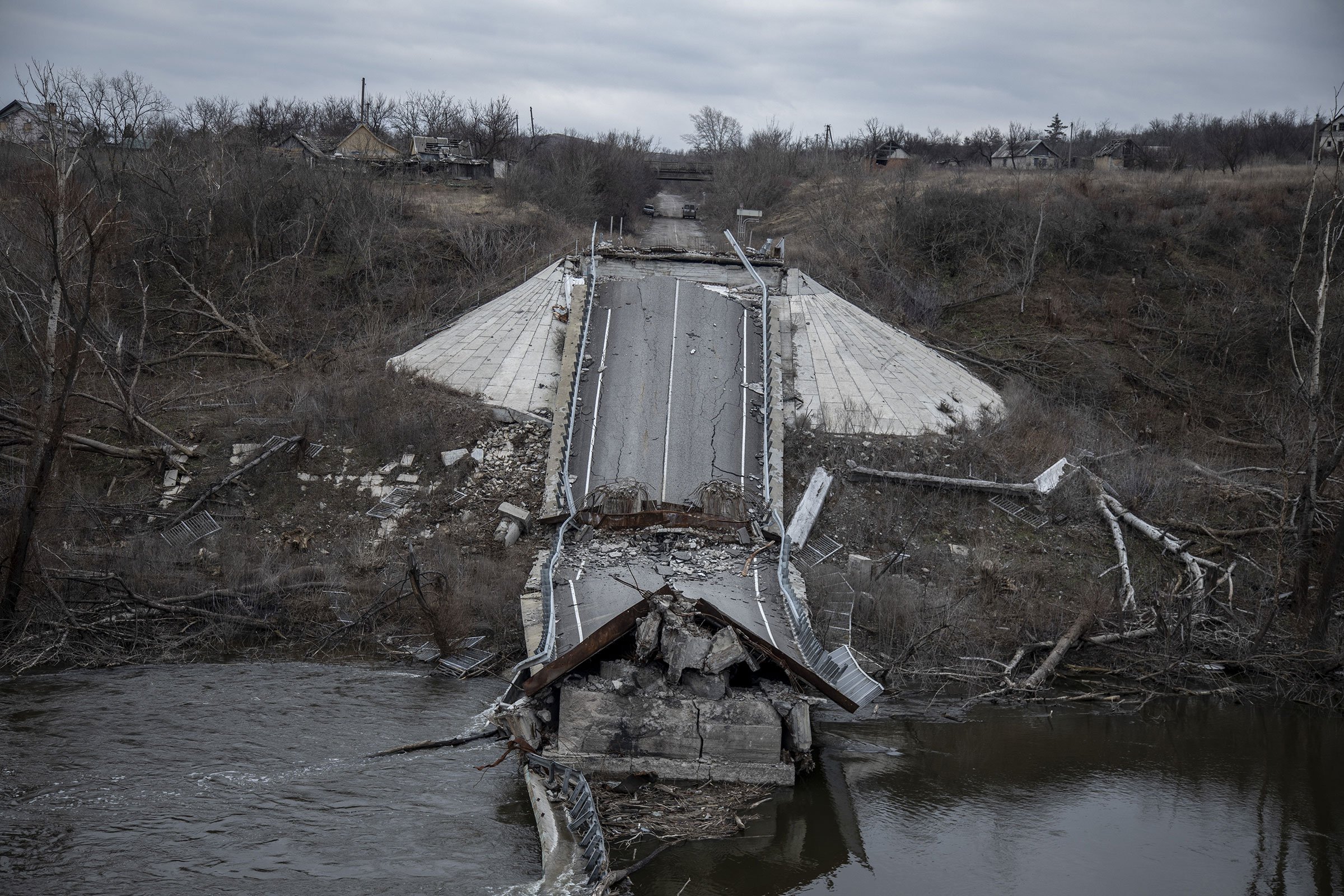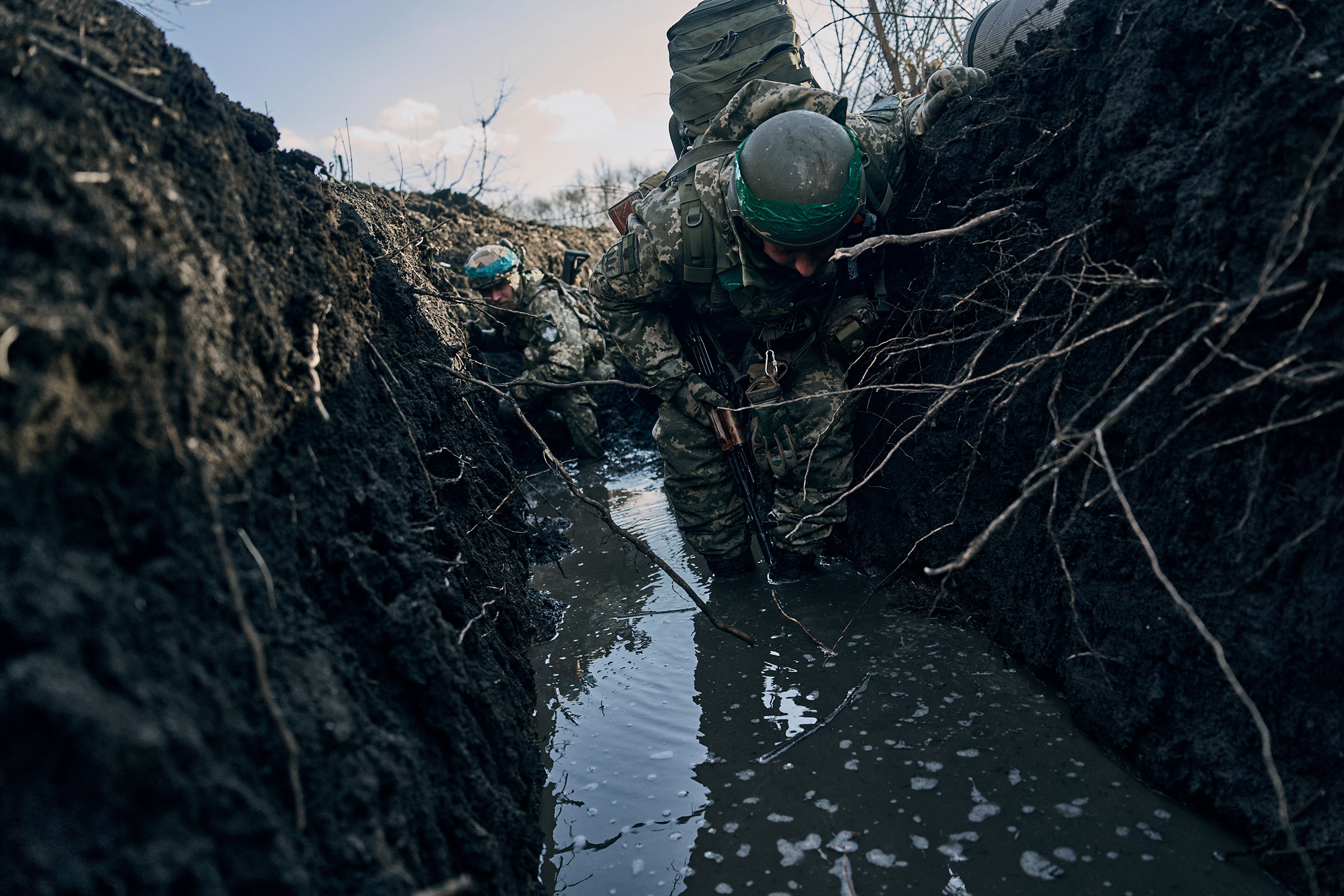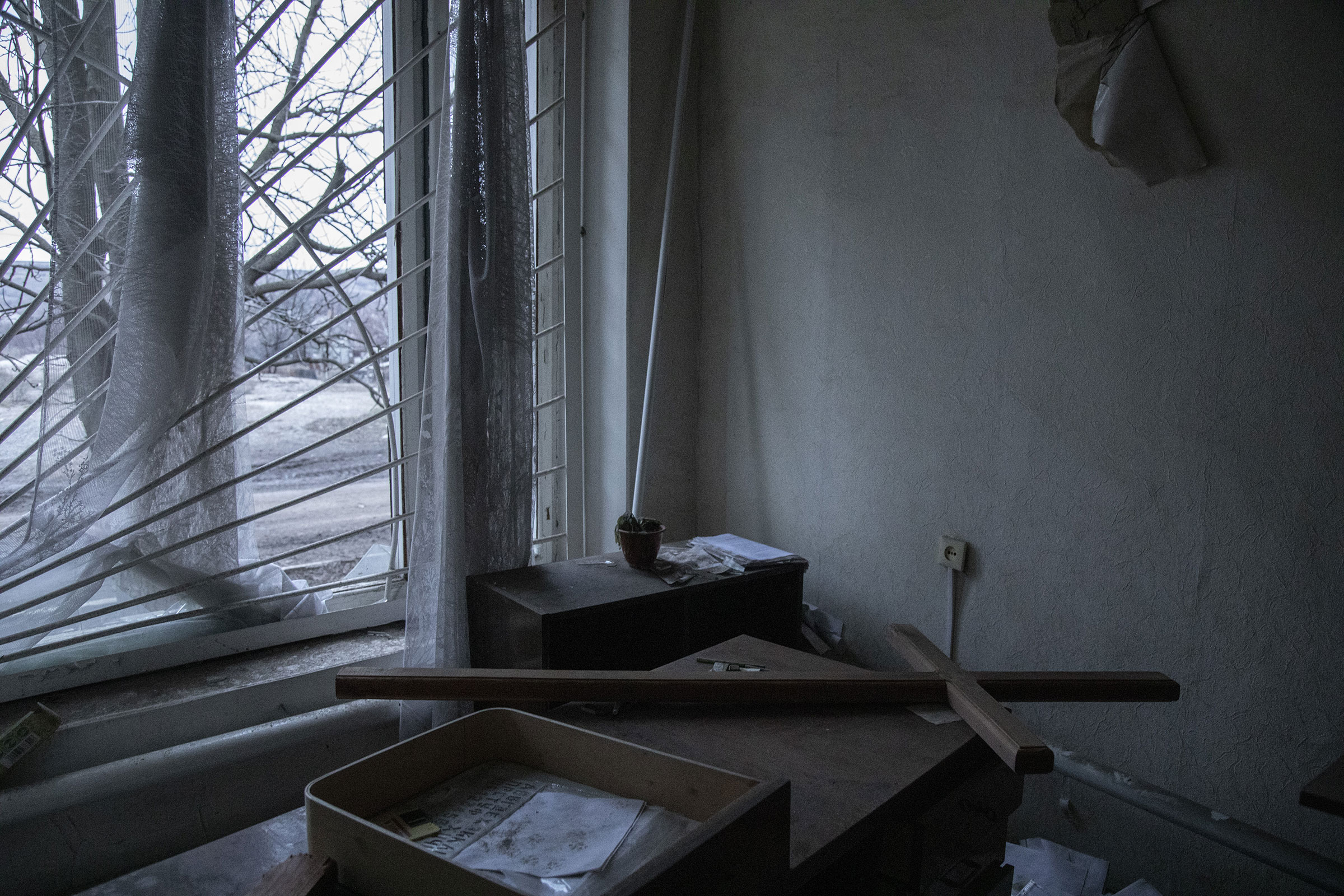After several months of grinding, attritional conflict, the longest and bloodiest battle of the Russian war in Ukraine appears to be reaching an apex. In the eastern Ukrainian city of Bakhmut, Russian forces are advancing in their effort to completely surround the largely destroyed city, while Ukrainian forces appear to be conducting what the Institute for the Study of War think tank described on Sunday as a “limited fighting withdrawal” in the eastern part of the city.
As of Sunday night, Ukrainian officials said that they are continuing to hold off attacks from Russian troops and that there have been no decisions regarding withdrawal.
In the coming days and weeks, observers are bracing for two possible scenarios to occur. The first is that Russian forces continue to close in on central Bakhmut from the north, east, and southwest, forcing Ukrainian forces to conduct a controlled withdrawal out of the city in what would be its first major retreat since last summer—a pyrrhic victory for Moscow that comes with as many as tens of thousands of casualties and countless resources. The second is that Ukraine’s army stages a successful counterattack that repels further Russian advance, with possibly major implications for Russia’s frontline.
As of this writing, neither outcome can be ruled out, as Ukrainian and Russian forces appear to come under resource strains and internal divisions that may ultimately determine the fate of this embattled, albeit seemingly inconsequential, city. Here’s what to know.

What is the current situation in Bakhmut?
The former salt mining town, which once had a population of 70,000, has been reduced to rubble over the past seven months. In recent weeks, Russian forces have made small, tactical advances into the city’s northern, eastern, and southern sectors that could force a “turning movement” that is aimed at forcing their Ukrainian counterparts to flee. (Encirclement, on the other hand, aims to trap and destroy troops.)
Karolina Hird, a Russia analyst at the Institute for the Study of War, says that a turning movement would not represent a massive change of fortune for Russia. While these kinds of street-by-street, block-by-block advances are “inevitable,” she says, they may be enough to prompt Ukraine to reconsider its approach to the city, which Ukrainian President Volodymyr Zelensky pledged last month to defend, though not at any price.
“What we’ve been seeing and what we assess that Ukrainian forces are setting conditions for is that they’re slowly leaving their positions, especially in eastern Bakhmut, and moving to the west of Bakhmut, where we know that they have heavily-fortified positions,” says Hird. “If the Russian turning movement in eastern Bakhmut is successful, it will come up against the current existing fortification in western Bakhmut.”
Read More: Why Russia Is So Determined To Capture Bakhmut
Yehor Cherniev, a Ukrainian lawmaker and head of the Ukrainian delegation to the NATO parliamentary assembly, tells TIME that a Ukrainian retreat from Bakhmut is not as imminent as some reports claim, noting that Ukrainian forces still retain control over supply roads in the city. Nevertheless, he adds, holding Bakhmut isn’t necessarily Kyiv’s ultimate goal. “If you look only at the map and the tactical situation, then it looks like [the situation] has worsened for us,” says Cherniev. But as Kyiv sees it, the situation in Bakhmut continues to work in Ukraine’s long-term interests, both in terms of grinding down newly-mobilized Russian troops and ammunition as well as buying time to prepare Ukrainian reserves for a spring counteroffensive.
Moscow’s “obsession” with capturing the city will be exploited by Ukraine for as long as it can, adds Cherniev. “We will keep Bakhmut as long as it is appropriate,” he says, noting that the ultimate decision over when or how to withdraw would fall to the leaders of Ukraine’s armed forces.
In doing so, however, Ukraine runs the risk of incurring more losses than it can necessarily afford. “Strategies can reach points of diminishing returns,” Michael Kofman, the director of Russia Studies at the U.S.-based Center for Naval Analyses, observed in a recent tweet, noting that more Ukraine losses in Bakhmut “could impede the success of a more important operation.”

What role is the Wagner Group playing in the fight for the city?
The Russian paramilitary group has supplied tens of thousands of men—the vast majority of whom have been sourced from Russian prisons—to Moscow’s war effort in Ukraine. In Bakhmut, where they have been deployed alongside conventional Russian forces, Wagner mercenaries have posed a unique threat, effectively serving as cannon fodder in what some Ukrainian forces have described as a “nonstop” Russian assault.
In an interview with the Wall Street Journal, Ukrainian battalion commander Sr. Lt. Petro Horbatenko likened the Wagner Group’s strategy in Bakhmut to “zombie” warfare, noting that they are not as sensitive to losses as the Ukrainian side.
Still, even the Wagner Group’s founder Yevgeny Prigozhin concedes that there are limits to what his forces are capable of without adequate resources. In a video address posted over the weekend, Prigozhin complained about a lack of agreed-upon ammunition from Moscow, the absence of which he chalked up to “ordinary bureaucracy or a betrayal.” Without his penal battalions, he added, “the frontline will collapse all the way to Russian borders.” That rift appeared to deepen on Monday, when Prigozhin said that his representatives were denied access to the headquarters of Russia’s military command.
Further fissures between the Wagner Group and the Kremlin could pose a real challenge to the Russian war effort, says Hird, noting that the former has been the primary driver of Russian gains on the frontline. “We know that the Kremlin is trying to siphon away Prigozhin’s influence and reliance on the Wagner Group,” she says. “If the Wagner Group were to just leave Bakhmut, we don’t really know who would be left there, other than some very limited airborne elements.”

What happens if Ukrainian forces retreat from Bakhmut?
If Bakhmut were to fall into Russian hands, it would represent a rare, if symbolic, victory in the Russian war effort—the first to occur since Moscow’s capture of the eastern Ukrainian town of Soledar earlier this year. For Ukraine, it would offer a similarly symbolic loss—its first major territorial concession since the summer, as well as a hit to overall morale.
But experts such as Hird say that this is where Bakhmut’s significance ends. The city would not afford Moscow any major strategic advantage, though Prigozhin has warned about the costs of losing the city. If anything, Hird says, the manpower and resources incurred in the process of its capture may likely prevent Russia from launching another prolonged offensive operation in the coming months.
“There’s been a little bit of panic in Western media about what it means if Bakhmut falls, and I think it means the same thing that it meant back in summer of 2022 when Severodonetsk and Lysychansk fell,” says Hird, referencing the territories Ukraine withdrew from over the summer. “This isn’t going to be a turning point in the war in any sort of concrete sense. In fact, it will probably allow Ukrainians the opportunity to regain the initiative once this offensive has culminated and pursue their own array of counteroffensive options.”
More Must-Reads from TIME
- Cybersecurity Experts Are Sounding the Alarm on DOGE
- Meet the 2025 Women of the Year
- The Harsh Truth About Disability Inclusion
- Why Do More Young Adults Have Cancer?
- Colman Domingo Leads With Radical Love
- How to Get Better at Doing Things Alone
- Michelle Zauner Stares Down the Darkness
Write to Yasmeen Serhan at yasmeen.serhan@time.com